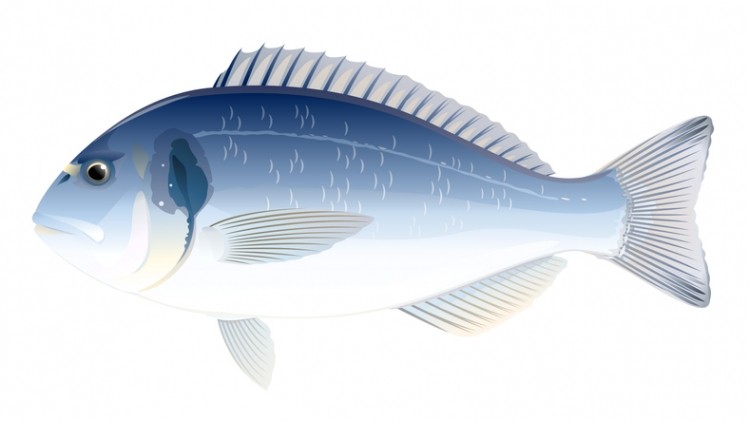Replacing fishmeal with poultry derived PAP in seabream diets does not hinder growth, reduces feeding costs

Such supplementation also improves the economic efficiency of these diets, said the researcher team, which is based in Portugal.
In a paper published in Aquaculture, they said that following recent evidence of acceptance of high PBM inclusion levels in diets for gilthead seabream, they wanted to further evaluate the effect of such supplementation in a diet formulated according to current commercial standards on gilthead seabream performance, diet digestibility, digestive function, and intestinal microbiota, and to perform an economic analysis of dietary PMP incorporation in practical diets.
The case for PAPs
Processed animal proteins (PAPs), including PBM, have a high protein content, a lack of anti-nutritional factors, are highly palatable and have high potential as a dietary protein source for aquaculture fish, said the team, citing work by Oliva-Teles et al., 2015.
“Contrary to plant protein sources, PAPs have, however, highly variable composition, depending on the quality of raw materials and processing methods and they may be limited in essential amino acids, such as methionine and lysine (Galkanda-Arachchige et al., 2020).
“The optimum dietary replacement level of FM by PBM is highly dependent on fish species, diet formulation, and quality of the PBM used,” they noted.
The results of earlier studies should not be directly compared with recent ones, due to the technical improvement of rendered animal by-products over the last two decades (Davies et al., 2009), said the team.
Recently, Davies et al. (2019) observed in a trial with 22g juveniles that up to 75% of dietary FM could be replaced by PBM; however, in a second trial, with 10g juveniles, growth performance was significantly decreased with diets including 75% of either PBM or defatted PBM, noted the researchers.
Karapanagiotidis et al. (2019) further observed that 50 or 100% of FM replacement by PBM led to a reduction of growth performance and feed efficiency in 2.5g juveniles, they said.
“This seems to indicate that maximum tolerable dietary PBM inclusion is dependent on fish size, with smaller fish tolerating lower PBM inclusion levels.
“In these studies, the essential amino acid (EAA) content of the PBM-based diets was not adjusted, and a deficiency of sulfur amino acids might have occurred, as both methionine and cysteine levels are much lower in PBM than in FM (Nengas et al., 1999).
“Accordingly, in another trial with 3g juveniles, Karapanagiotidis et al. (2019) observed no differences in the growth performance of the animals when 50% FM (the highest levels tested) was replaced with PBM plus methionine and lysine supplementation.”
Methodology
Six isoproteic and isolipidic diets were formulated including increasing levels (from 0 to 37.5%) of PBM to replace fishmeal, explained the scientists.
Each diet was randomly assigned to triplicate groups of fish and the growth trial lasted 70 days.
Findings
The team found that the fish promptly accepted all diets and neither pathological signs nor mortality were observed during the trial.
Growth performance, expressed as final body weight, weight gain, and daily growth index, was unaffected by the dietary inclusion of PBM.
Similarly, voluntary feed intake, feed efficiency, protein efficiency ratio, and protein retention, as a percentage of protein intake, were also unaffected by the dietary PBM inclusion level.
Regarding gut microbiota, in gilthead sea bream fed a moderate level of PBM (22.5%), an increase of microbial OTUs, richness, and diversity indices was observed in digesta samples but not in the mucosa.
They also saw that the cost of diet formulation decreased with the dietary replacement of FM by PBM, highlighting the potential of poultry by-products inclusion in commercial diets.
“The diet with the highest PBM level (37.5PBM diet) was 20% less expensive than the control diet, resulting in an improved economic efficiency ratio.
“Moreover, as feed efficiency was not affected by diet incorporation of PBM, the price per kg of weight gain was reduced by about 15%.”
Source: Aquaculture
DOI: https://doi.org/10.1016/j.aquaculture.2020.735879
Title: Effect of dietary poultry meal and oil on growth, digestive capacity, and gut microbiota of gilthead seabream (Sparus aurata) juveniles
Authors: F Fontinha, R Magalhães, S Moutinho, R Santos, P Campos, CR Serra, T Aires, A Oliva-Teles, H Peres








